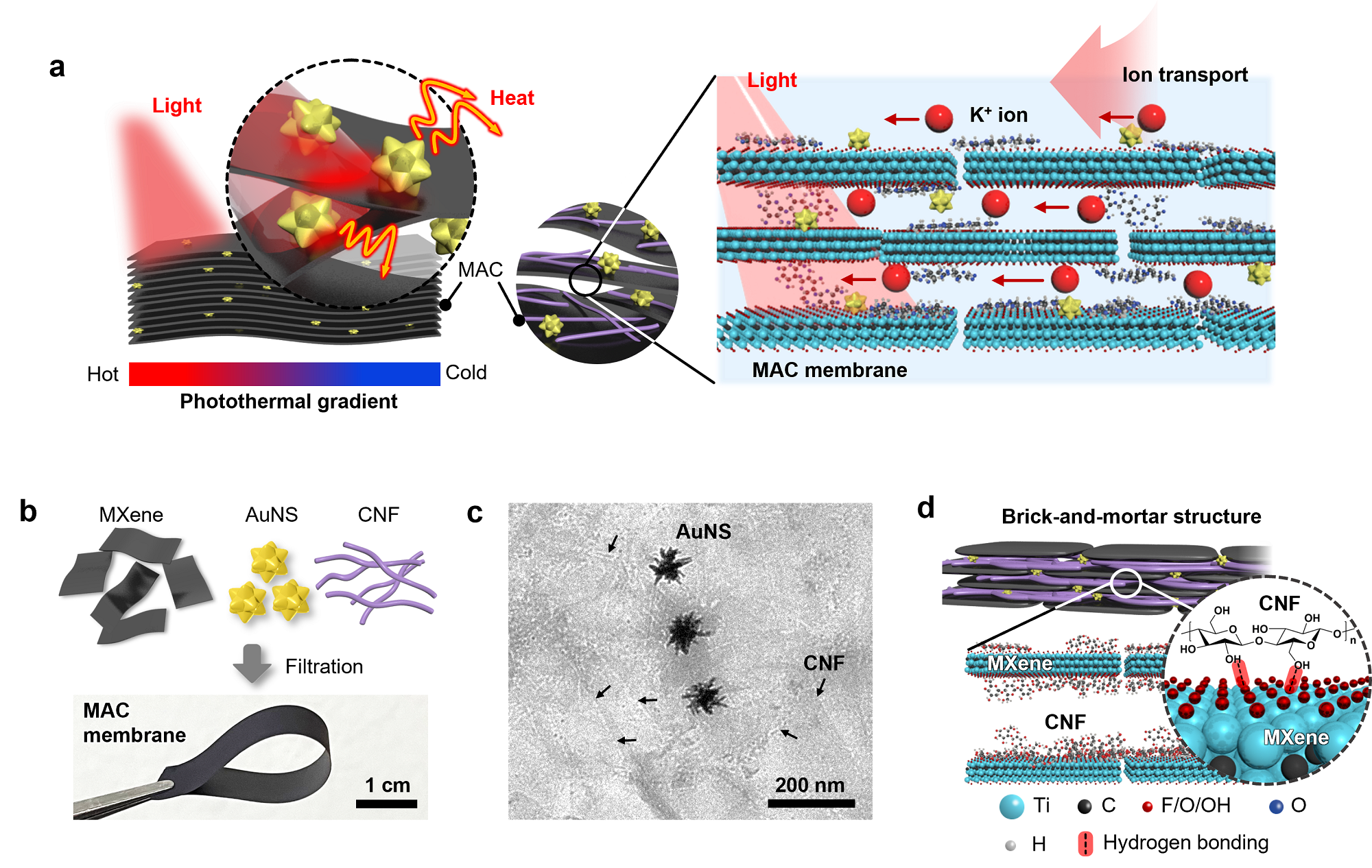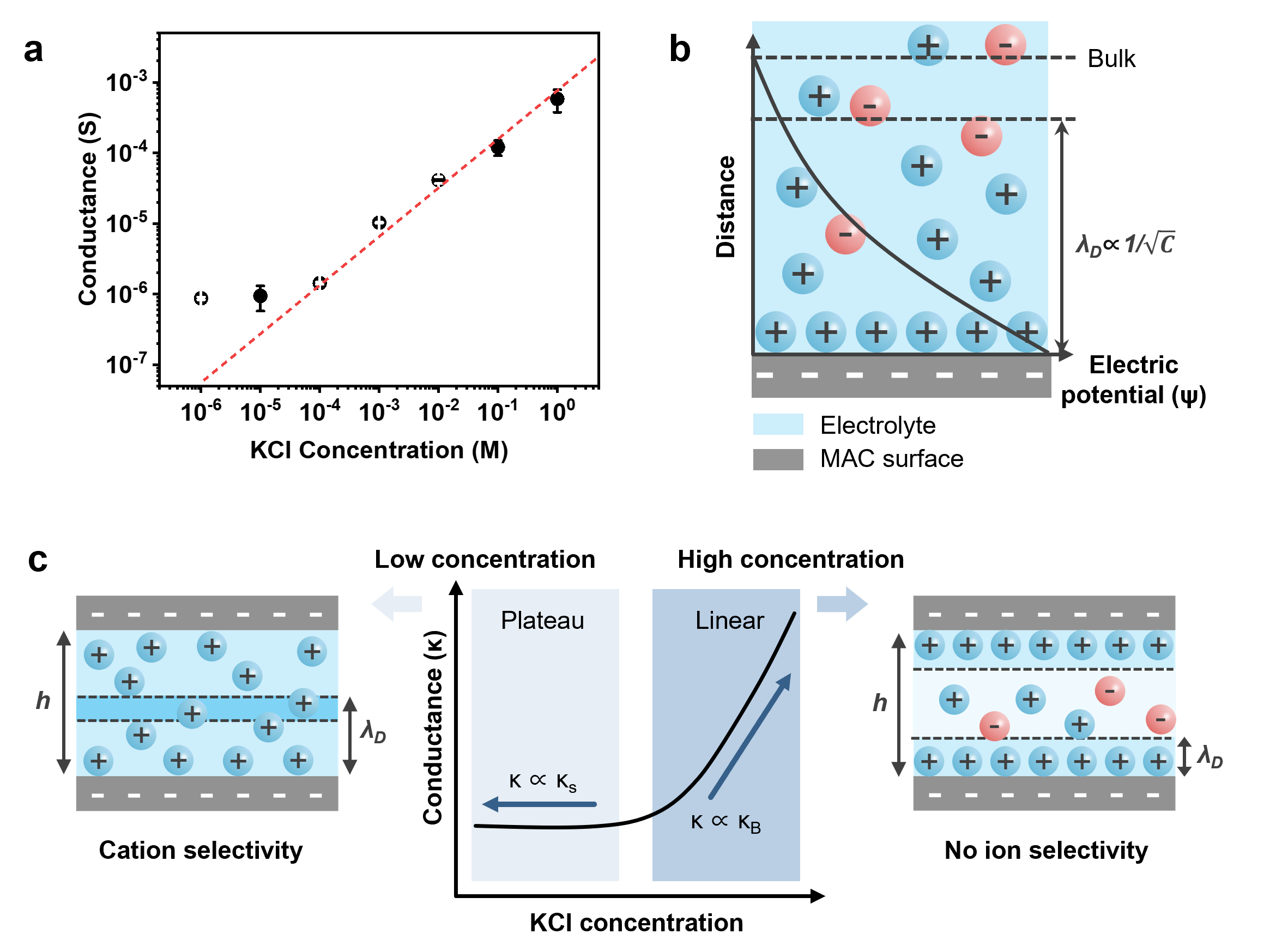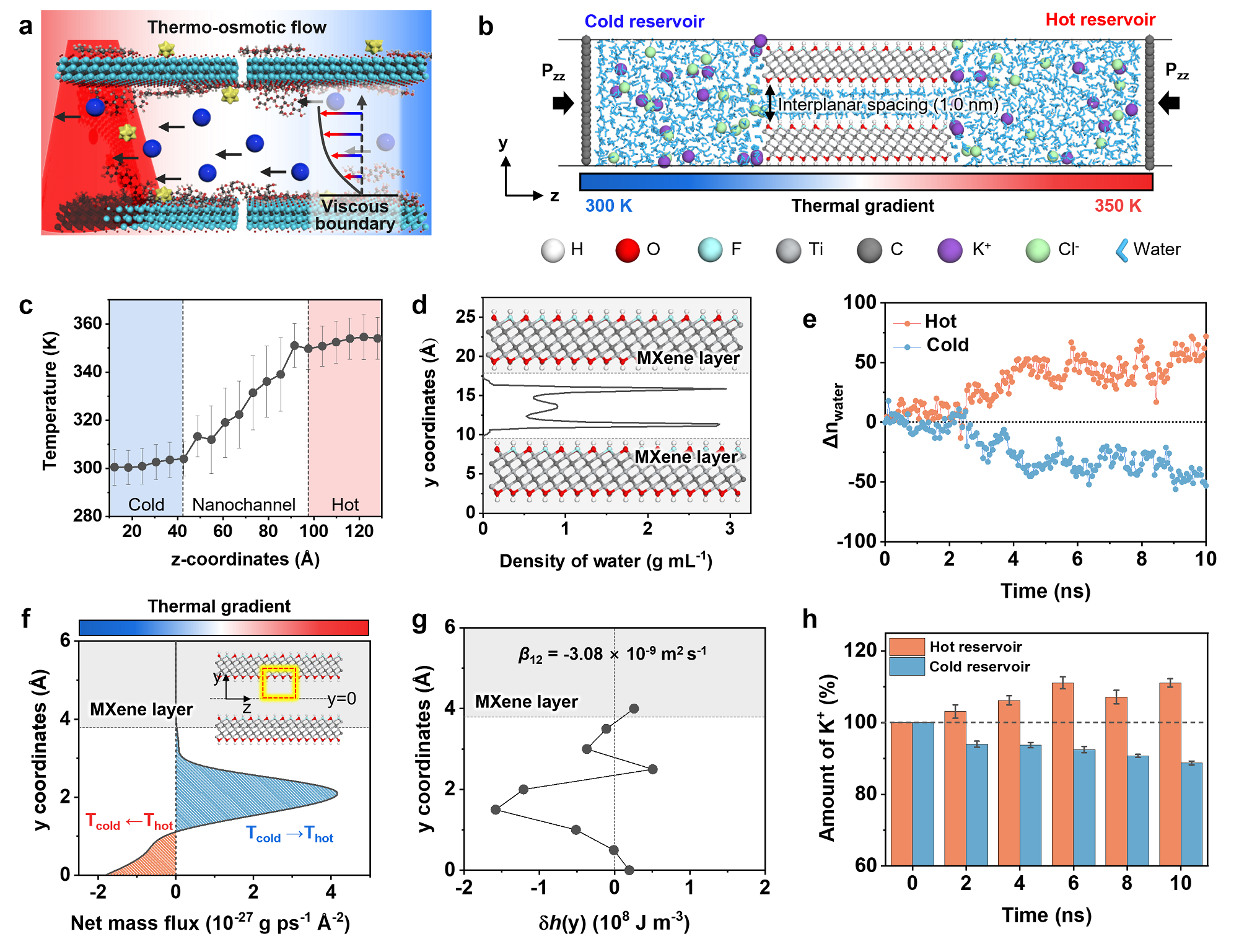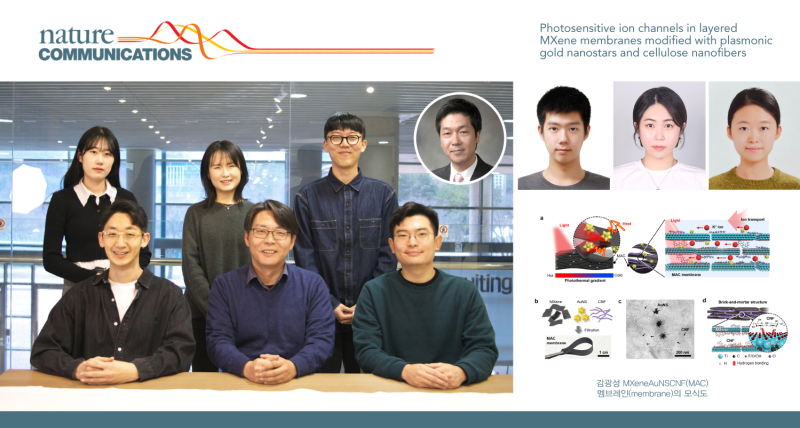Ions are essential sources of signaling tools for living organisms. Recently, interest in the development of various artificial ion channels that respond to various external stimuli (electrical, pH, light, pressure, etc.) by simulating biological ion channels has been increasing.
A research team, affiliated with UNIST has unveiled a photosensitive ion channel based on plasmonic gold nanostars (AuNSs) and cellulose nanofibers (CNFs) embedded in layered MXene nanosheets. According to the research team, this MXene/AuNS/CNF (MAC) membrane provides subnanometer-sized ionic pathways for light-sensitive cationic flow.

Figure 1: Schematic illustration of photosensitive Xene/AuNS/CNF (MAC) membrane.
This breakthrough has been led by Professor Hyunhyub Ko in the Department of Energy and Chemical Engineering at UNIST, in collaboration with Professor Sang Kyu Kwak at Korea University. The research team envisions that this MAC composite membranes can be applied in flexible ionic channels with ionogels and light-controlled ionic circuits.
In this work, the research team demonstrated a photothermally responsive MAC membrane containing plasmonic AuNSs and CNFs in MXene nanosheets. In this structure, AuNSs were intercalated in the layered MXene nanosheets to enhance the photothermal effect of the MAC composites. In addition, CNFs distributed inside the membrane improved the mechanical integrity and increased the interlayer spacing for facile ion flow with reduced spatial hindrance, noted the research team.

Figure 2. Ion transport through the MAC nanochannel.
According to the research team, the nano-spaced, negatively charged, and hydrophilic MAC membrane electrostatically attracted counterions (i.e., cations) and the nanoconfined fluid tended to be localized near the channel wall with high mass density, which was directionally transported through the MAC membrane under the light stimulus. When NIR light was locally irradiated on the MAC membrane, thermal gradient was formed across the MAC nanochannel, which resulted in directional cationic flow driven by interfacial photothermo-osmotic flow, noted the research team.
“The optimized MAC membrane showed photothermal ionic current of ~40 nA that was nearly seven times higher than that of the pristine MXene-based nanochannel and 14 times higher ionic current than that of the GAC membrane,” said the research team. “An all-solid flexible MAC film could be used as a flexible photoresponsive ion channel through the incorporation of a PAM-based ionogel,” said the research team.” They added, “Furthermore, the light-responsive MAC membrane can be potentially utilized in nanofluidic circuits, such as ionic photoswitches.”

Figure 3. Photothermal ionic current of the MAC membrane.
The findings of this research have been published in the January 2023 issue of Nature Communications. This study has been supported by the National Research Foundation of Korea (NRF), funded by the Ministry of Science and ICT (MSIT).
Journal Reference
eom, J., Choe, A., Lee, J. et al., “Photosensitive ion channels in layered MXene membranes modified with plasmonic gold nanostars and cellulose nanofibers.” Nat. Commun., (2023).












